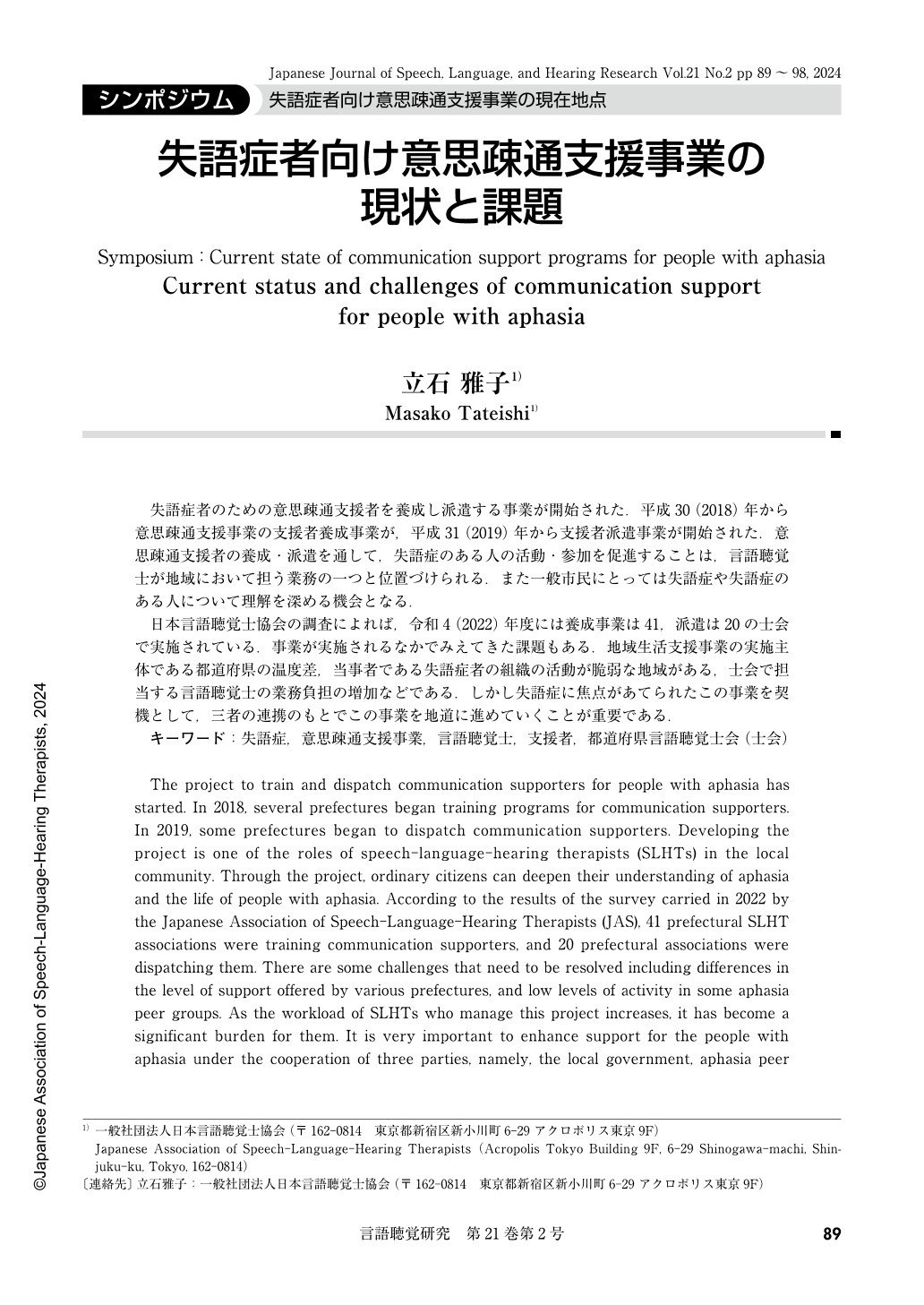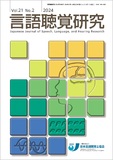Japanese
English
- 有料閲覧
- Abstract 文献概要
- 1ページ目 Look Inside
- 参考文献 Reference
失語症者のための意思疎通支援者を養成し派遣する事業が開始された.平成30(2018)年から意思疎通支援事業の支援者養成事業が,平成31(2019)年から支援者派遣事業が開始された.意思疎通支援者の養成・派遣を通して,失語症のある人の活動・参加を促進することは,言語聴覚士が地域において担う業務の一つと位置づけられる.また一般市民にとっては失語症や失語症のある人について理解を深める機会となる.
日本言語聴覚士協会の調査によれば,令和4(2022)年度には養成事業は41,派遣は20の士会で実施されている.事業が実施されるなかでみえてきた課題もある.地域生活支援事業の実施主体である都道府県の温度差,当事者である失語症者の組織の活動が脆弱な地域がある,士会で担当する言語聴覚士の業務負担の増加などである.しかし失語症に焦点があてられたこの事業を契機として,三者の連携のもとでこの事業を地道に進めていくことが重要である.
The project to train and dispatch communication supporters for people with aphasia has started. In 2018, several prefectures began training programs for communication supporters. In 2019, some prefectures began to dispatch communication supporters. Developing the project is one of the roles of speech-language-hearing therapists (SLHTs) in the local community. Through the project, ordinary citizens can deepen their understanding of aphasia and the life of people with aphasia. According to the results of the survey carried in 2022 by the Japanese Association of Speech-Language-Hearing Therapists (JAS), 41 prefectural SLHT associations were training communication supporters, and 20 prefectural associations were dispatching them. There are some challenges that need to be resolved including differences in the level of support offered by various prefectures, and low levels of activity in some aphasia peer groups. As the workload of SLHTs who manage this project increases, it has become a significant burden for them. It is very important to enhance support for the people with aphasia under the cooperation of three parties, namely, the local government, aphasia peer groups, and prefectural association of SLHTs. It is the responsibility of us SLHTs to try to solve these problems.

Copyright © 2024, Japanese Association of Speech-Language-Hearing Therapists. All rights reserved.


